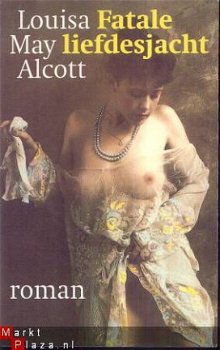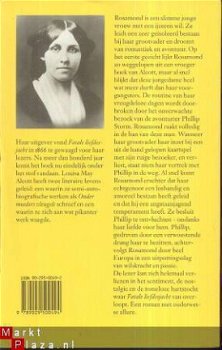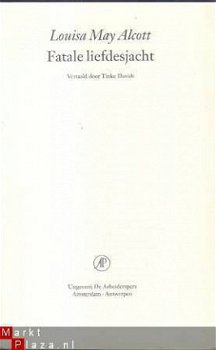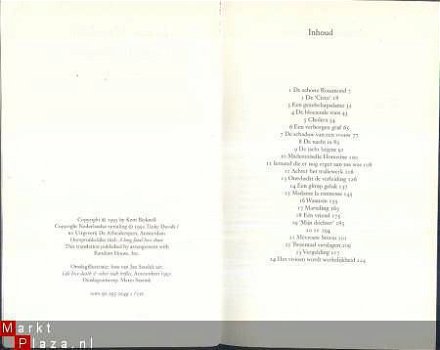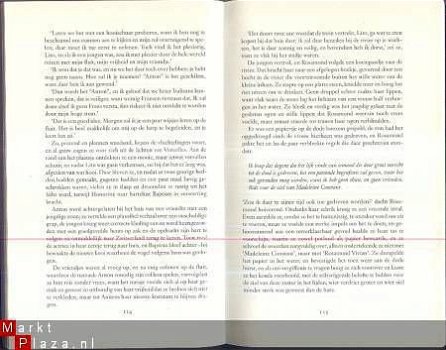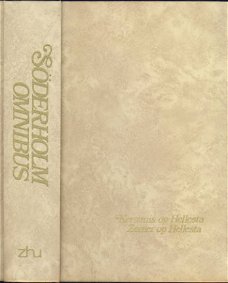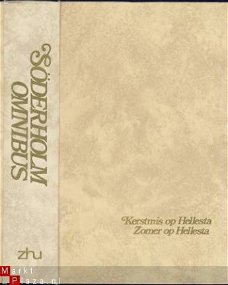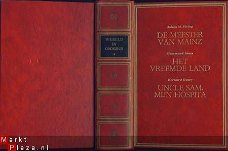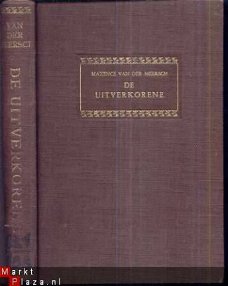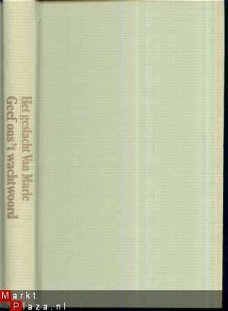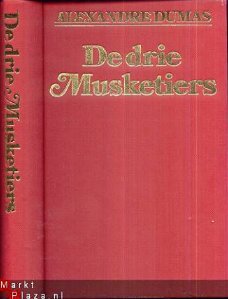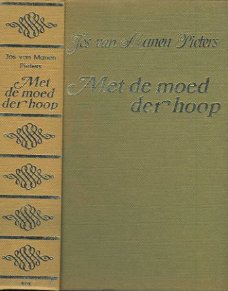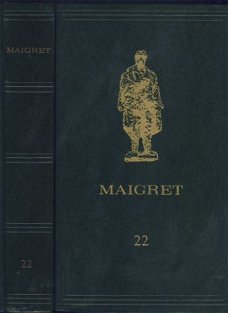
LOUISE M.ALCOTT**FATALE LIEFDESJACHT*A LONG FATAL LOVE CHASE
Kenmerken
- Conditie
- Gebruikt
- Levering
- Niet van toepassing
Omschrijving
LOUISE MAY ALCOTT
**FATALE LIEFDESJACHT**
*A LONG FATAL LOVE CHASE*
VERTAALD DOOR TINKE DAVIDS.
UITGEVERIJ DE ARBEIDERSPERS AMSTERDAM ANTWERPEN.
ARTIKEL INVENTARIS CODE 45.307
FORMAAT 214 x 135 x 23 + 230 PGS + 327 GRS.
VERZENDING IN BELGIE 2,35 EURO NAAR EUROPA 7,35 EURO.
THE MERIT OF ORIGINALITY IS NOT NOVELTY; IT IS SINCERITY.THE BELIEVING MAN IS THE ORIGINAL MAN.; WHATSOEVER HE BELIEVES, HE BELIEVES IT FOR HIMSELF, NOT FOR ANOTHER.** dixit THOMAS CARLYLE (1795 - 1881)
L(ouisa) M(ay) Alcott (1832-1888) - pseudonyms: A. Barnard,
Flora Fairfield
American author, known for her children' books, especially
LITTLE WOMEN (1868-69). Alcott draws her material from her
own family and from the New England milieu where she had
grown up. Originally she begun writing 'rubbish novels',
sometimes anonymously, sometimes as 'A.N. Barnard', to
contribute to the family income.
Above man's aims his nature rose.
The wisdom of a just content
Made one small spot a continent,
And tuned to poetry Life's prose.
(from Louisa May Alcott, Her Life Letters, and Journals,
1889)
Louisa May Alcott was born in Germantown (now part of
Philadelphia) as the second of four daughters of Abigail May
Alcott and Bronson Alcott (1799-1888). During Alcott's
childhood the family moved to Boston. She spent most of her
life in the Boston-Concord area, and received almost all her
early education from her father. His favorite moral guide
was Bunyan's Pilgrim's Progress. Bronson was member of the
New England Transcendentalists. He was an idealistic, if
impractical person, who believed in the spiritual life, as
contrasted with the material life. Louisa May called him
"the modern Plato". When a visiting English author
criticized his teaching methods, he moved with his family to
Concord. Among the family friends were Theodore Parker,
Henry David Thoreau, and Ralph Waldo Emerson. Bronson's
ideas influenced a numer of educators, but nowadays his
books are no loger widely read. He wrote also poems. Sonnets
and Canzonets (1882) was written in memory of his wife.
Diana and Persis, which Alcott started to write in 1879, was
based on her sister May's life and unconventional marriage
in Europe.
Alcott began to keep diary at the age of seven. At age of
fifteen she started to regard Goethe as her "chief idol",
and was deeply impressed by Goethe's Correspondence with a
Child, which Emerson gave her. Also the Brontë family
inspired her, especially Charlotte Brontë. Alcott's first
book, FLOWER FABLES (1854), a collection of tales, was
originally written for Emerson's daughter Ellen. After the
failure of her father's utopian community Fruitlands, she
took care with her mother of the welfare of the family. In
one sonnet her father praised Louisa May as "duty's faithful
child". Alcott's mother had not been so enthusiastic about
the New Eden plan of her husband. The family moved into
Boston again. In WORK: A STORY OF EXPERIENCE (1873) Alcott
later recorded her unhappy experiences as a domestic
servant, but also demonstrated through her character
alternative values, such as equality and self-fulfillment,
for women.
By 1860 Alcott's short stories and poems began to appear in
the Atlantic Monthly (now The Atlantic). An ardent
abolitionist, she volunteered in the American Civil War as a
nurse. "Go nurse the soldiers," had her neighbor said, when
she had stated: "I want something to do." In 1862-1863
Alcott served at the Union Hospital in Georgetown, D.C.
During this time she contracted typhoid from which she never
completely recovered. In 1863 Alcott published her letters
in book form under the title HOSPITAL SKETCHES. The work was
well received although some of her readers objected "the
tone of levity." Hospital Sketches encouraged Alcott to
continue with her writing aspirations. Alcott's first novel
was MOODS (1867). A LONG FATAL LOVE CHASE, a tale about
obsession, which she wrote in 1866 for magazine
serialization, was not published in book until 1995. The
story was considered by Alcott's publisher "too
sensational." The heroine, Rosamond, is pursued across
Europe by the diabolic Philip Tempest, who first nearly
manages to get her under his spell. "I like danger," she
tells Tempest, before he has revealed his true nature.
In 1867 Alcott became editor of a children's magazine, Merry
Museum. With the publication of Little Women, which was born
under the pressure of financial need, Alcott gained enormous
fame as a writer. As a model for the character Amy she took
May Alcott, her sister. Anna was the model for Meg, and Abba
May Alcott the beloved mother Marmee. In Part II May
Alcott's drawings were replaced by illustrations by Hamnatt
Billings.
Little Women was published in two parts in 1868 and 1869 -
the second part under the title Good Wives. Originally
Alcott was asked to write a "girls' story" for Thomas Niles,
a partner in the Boston firm of Roberts Brothers. She
agreed, but wrote in her journal: "I plod away, though I
don't really enjoy this sort of thing. Never liked girls or
knew many, except my sisters, but our queer plays and
experiences may prove interesting, though I doubt it." In
1880 the book was published in a somewhat bowdlerized
edition, which remained the basis for the subsequent
editions.
The story starts from the years of the American Civil War
and is set in a quiet Massachusetts town. Meg, Jo, Bert, and
Amy March are raised in genteel poverty by their loving
mother Marmee. Their father serves as a Civil War preacher.
The girls entertain themselves by producing plays and a
weekly newspaper. Soon they befriend Theodore Lawrence, who
is the grandson of a rich old man. Some years pass. Meg
marries Laurie's tutor John Brooke, Beth's health
deteriorates and eventually dies from scarlet fever. Laurie
falls in love with Jo, but he is turned down and flees with
his grandfather to Europe. Amy and Laurie became engaged
abroad. Jo's choices are crucial for the development of the
events. Jo, a version of the author herself, vows never to
marry. She wants to be a journalist, but she is frustrated
with her role and tight Christian values. She goes to New
York and continues to write. Finally Jo marries Professor
Bhaer, an older scholar from Germany, although he has
discouraged her writing. Together they set up a school for
boys.
Feminist critics have concluded that Jo's decision means
actually self-denial and regression. Later Alcott wrote to a
friend about Jo's marriage: "Jo should have remained a
literary spinster but so many enthusiastic young ladies
wrote to me clamorously demanding that she should marry
Laurie, or somebody, that I didn't dare to refuse and out of
perversity went and made a funny match for her."
Clive Bloom sees Little Women as a perfect example of the
evolution of the novel from its early days in Walter Scott.
The writing is self-conscious and aware of the importance of
the novel both as entertainment, art and moral instrument.
It was also produced for the new audience - young people.
(See: Cult Fiction by Clive Bloom, 1996). The book has
fascinated such writers as Simone de Beauvoir, Gertrude
Stein, and Joyce Carol Oates.
Little Women has been filmed several times. The
screenwriters Sarah Y. Mason and Victor Heerman received an
Academy Award for best adapted screenplay for the 1933
version, directed by George Cukor and starring Katherine
Hepburn. Mervyn LeRoy's adaptation from 1949 is considered
mediocre. It also softens Jo's beliefs in an autonomous
life. Gillian Armstrong's version (1994), adapted by Robin
Swicord, dealt with feminist issues. "In writing the
screenplay, Swicord views this story as a tale of strong
women, and she ideally wants young girls to come away from
the film with a sense of validation and feeling stronger in
this male-dominated world." (from Novels into Film by John
C. Tibbetts and James M. Welsh, 1999) Other film adaptations
of Alcott's work include The Inheritance (1997), directed by
Bobby Roth, starring Meredith Baxter and Tom Conti. Also
Little Men has inspired filmmakers.
Little Women was followed by several other popular works,
LITTLE MEN (1871), JO'S BOYS (1886), and others, in which
she followed the lives of the March family girls, Meg, Beth,
Amy and Jo. Alcott's last years were shadowed by the deaths
of her mother and her sister May, who left behind a little
daughter, Louisa May Nieriker. She gained fame as an
artists. She lived in Boston, London and Paris, where she
died in 1879. Among her literary works were Concord Sketches
(1869) and Art Studying Abroad (1879). For her Alcott wrote
the story 'Lu Sing', later published in the St. Nicholas
magazine in 1902. It was the last work she completed. Louisa
May Alcott died from intestinal cancer in Boston on March 6,
1888. She never married. In an interview Alcott once said of
herself: "I am more than half-persuaded that I am a man's
soul, put by some freak of nature into a woman's body".
Although Alcott is often labelled nowadays as a juvenile
writer, she published also thrillers and melodramatic
stories that appeared in weekly magazines. For her thrillers
published in the mid-1860s she used the ambiguous pseudonym
"A.N. Barnard". A MODERN MEPHISTOPHELES (1877) was published
anonymously. The Faustian story of a young woman and a
diabolic genius was republished posthumously with A WHISPER
IN THE DARK (1889). Alcott's revengeful heroines and themes
from mind control and madness, hashish experimentation and
opium addiction, differ radically from the domestic
atmosphere of her best-known works.
